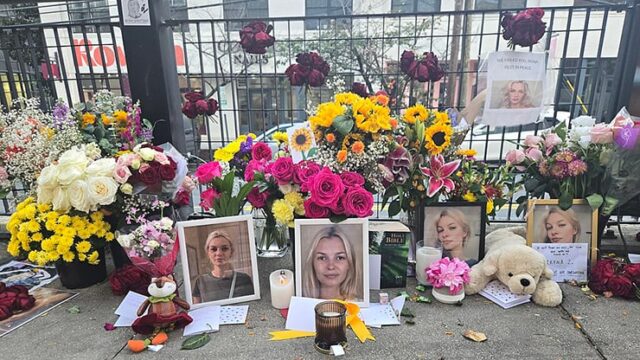Assassination, Murder, and the Collapse of Public Order Usher in Anarcho-Tyranny

In political discourse, acts of assassination and violent crime rarely occur in isolation. They reverberate across society, shaping perceptions of public safety, government priorities, and community cohesion around principles of stability, fairness, and authority. Assassination shocks the political imagination precisely because it violates the implicit promise that the political sphere, even amid fierce disagreement, will be governed by rules rather than arbitrary brutality.
The recent assassination of Charlie Kirk led to intensified scrutiny of a series of horrific killings across the United States. These include the murders of Julie Gard Schnuelle in Auburn, Alabama; Frank and Maureen Olton in Queens, New York; and, of course, Iryna Zarutska in Charlotte, North Carolina. Each of these cases involves its own set of circumstances, yet collectively they dramatize a larger breakdown of public security and civic trust—a subject Kirk was pushing intensely on the day he was killed. These incidents do not appear as isolated news items but as linked signs of a deeper social fracture.
Zarutska’s killing in particular—caught on the security cameras of the light rail she was riding as she returned from her shift at a pizzeria—illustrates the stark contradictions of contemporary American life. A young refugee who fled wartorn Ukraine for safety, she was brutally attacked in full public view. Her death underscores both the glorification of aggression in some quarters and the weary acceptance of commonplace violence in others.
Documented on video, ignored by bystanders, and met with inadequate official response, Zarutska’s death has become a grim emblem of urban breakdown: collective support eroding, accountability weakening, and city leaders hesitating to confront violent offenders. In Charlotte, Magistrate Judge Teresa Stokes had previously diverted DeCarlos Brown, Jr.—despite 14 prior offenses—to a mental health and addiction program she oversees rather than sending him to jail. Mayor Vi Lyles then pressured local media to suppress the footage, ostensibly out of respect for the family, but more likely in order to contain the fallout. Leaks and social media exposure ultimately forced the issue into the open.
The footage of Zarutska dying while nearby passengers watched recalls the infamous 1964 Kitty Genovese case, long cited as evidence of urban detachment. Yet Zarutska’s ordeal unfolded not just audibly but visibly—while at least four people sat nearby observing as her killer approached, attacked, and left her bleeding. This suggests something more profound than fear: a collapse of the basic social instinct to defend the vulnerable or, at the very least, summon aid. Was this passivity a result of terror, social conditioning, or a spectator mindset shaped by technology and social media? The very act of recording rather than intervening hints at a troubling shift from citizenship to spectatorship. People now inhabit public spaces as if they were stages, observing incidents like these as if they were vectors of content creation, and victims as if they were characters in their productions.
This indifference reflects a broader failure in civic and governmental leadership. A functioning society requires mutual responsibility, especially in its public spaces. When someone can be slaughtered openly without intervention or accountability, civic life ceases to exist. Rather, society becomes a collection of isolated individuals inhabiting the same space with no sense of mutual obligation. Zarutska’s death, therefore, resonated as a symbol of this unravelling and, by extension, the weakening of the social fabric that has historically underpinned democratic legitimacy.
This breakdown aligns with what the late political thinker, Samuel Francis, writing in this magazine in 1994, called “anarcho-tyranny”: a system in which authorities neglect basic law enforcement—creating chaos—while heavily policing compliant and nonthreatening citizens. It is not an absence of government, but a distorted application of it. The “anarchy” appears in the repeated failure to confine violent recidivists like Brown, who was steered to a judge’s program instead of prison. The “tyranny” appears in the eagerness of officials to suppress information, enforce speech codes, or penalize minor infractions. This imbalance leaves citizens exposed to genuine dangers while enduring bureaucratic intrusion in their ordinary lives.
Francis argued that anarcho-tyranny is deliberate: by overlooking crime, ruling elites cultivate dependence among certain groups, and by repressing dissent, they neutralize opposition. In this environment, fairness is no longer expected; self-protection supplants civic engagement; public spaces are ceded to aggressors, while ordinary people retreat into private enclaves. Over time, the public internalizes the message that intervention is futile, justice selective, and vigilance a private duty rather than a shared norm. Zarutska’s case aligns almost perfectly within this framework. Her attacker’s long record of priors signals the “anarchy” of nonenforcement; the suppression of footage and the policing of public reaction point to the “tyranny” of narrative control. Together they erode the legitimacy of law itself, replacing it with a sense of powerlessness and fear.
We may also look to Aristotle’s Politics to discover a classical lens on this pattern. In Book V, he warns that societies decay not only due to economic disparity or external threats but because of the erosion of fairness, confidence, and shared purpose within the community. When people perceive that laws are applied unequally, especially when violent acts are excused due to privilege or political alignment, their allegiance to the system falters.
A key pillar of Aristotle’s analysis is the perceptions of the middle class. He argues that a stable and engaged middle stratum moderates conflict between the rich and the poor, providing the backbone of civic life. Yet, when governments allow disorder to fester in ordinary neighborhoods while shielding elite enclaves, they weaken this foundation, prompting withdrawal and resentment. Disengagement of the middle not only undermines social trust but also opens the door to factionalism and, eventually, to revolution or authoritarian rule.
The purpose of the political community, Aristotle argues, is to enable human flourishing, and it fails fundamentally if that protection becomes unreliable. Laws must not only exist but also be enforced impartially to command respect. Without the assurance of safety, all higher civic aspirations—such as education, culture, and public debate—erode. This framework illuminates why incidents like Zarutska’s killing carry such political weight. They are not just local crimes but signals of whether the political order still fulfils its foundational promise. A society that cannot safeguard life in public spaces forfeits its moral authority to demand obedience or participation from its citizens.
Zarutska’s murder thus highlights more than a local tragedy: it signals a breakdown of collective life. A city where open killings go unpunished, where witnesses stand idle, and where leaders downplay or excuse such crimes is no longer a true civic community but a transactional space—or, worse, a battleground of rival factions. As public confidence erodes, individuals retreat into private security, gated areas, and electronic monitoring, leaving public spaces to informal power structures and opportunists. This retreat accelerates the state’s decline, as its authority rests on maintaining order and stability. When a regime demands obedience but fails to provide protection, its legitimacy wanes and its rule appears arbitrary or oppressive.
Aristotle observed that such conditions breed polarization and extremism. Faced with chronic disorder, some demand ever harsher controls, while others push for radical change—each response intensifying the other. The lesson is clear: no society can endure without reestablishing fairness, accountability, and a shared sense of civic duty. Prosperity and innovation matter less than maintaining the trust and safety that sustain everyday life. Rebuilding this trust requires more than policy tweaks; it demands a renewed commitment to public responsibility, impartial justice, and the defence of communal spaces.
In this light, Zarutska’s death is not an isolated horror but a warning. A culture that tolerates open killings and indifferent witnesses risks losing the essence of civic society itself. Neglecting enforcement, excusing bias, and allowing communal ties to fray endangers the nation at its core. Without renewed emphasis on safety and accountability, America risks following the ancient trajectory Aristotle described—from harmony to division, division to conflict, and conflict to societal unravelling.
This dynamic does not merely corrode public order; it transforms political life itself. Once public spaces are ceded to violence and cynicism, the political realm narrows to a contest of factions seeking power rather than a shared forum of deliberation. As faction replaces community, governance becomes an exercise in managing resentments rather than pursuing the common good.
Yet Aristotle’s analysis also implies a route for recovery. Societies can restore balance by reaffirming impartial justice, strengthening their middle classes, and cultivating civic virtue. This involves not only the enforcement of laws but also the cultivation of habits—such as public spiritedness, courage, and mutual aid—that make intervention possible. Citizens must once again see public safety not as a service they are owed but as a shared responsibility they owe to one another.
The death of Iryna Zarutska thus serves as a mirror reflecting America’s current predicament. Her murder encapsulates the fraying of civic bonds, the failures of public institutions, and the normalization of violence in public spaces. It dramatizes the emergence of Francis’s anarcho-tyranny, illustrating Aristotle’s warnings about the collapse of fairness, the marginalization of the middle class, and the rise of factionalism. However, her story also highlights the urgent need for renewal and calls upon us to reflect upon how we might bring that about.
Societies are not doomed to perpetual decline; they can rebuild the habits and institutions that sustain civic life. That will require an honest reckoning with the failures of current policy and a recommitment to the basic duties of governance—foremost among them the protection of human life. Zarutska’s story encapsulates our era’s essence: a culture that endures open slayings teeters on the brink.
